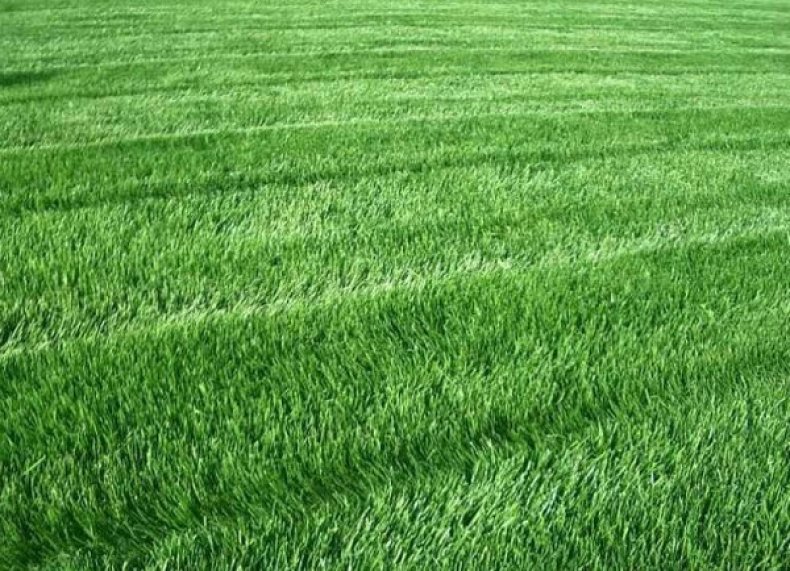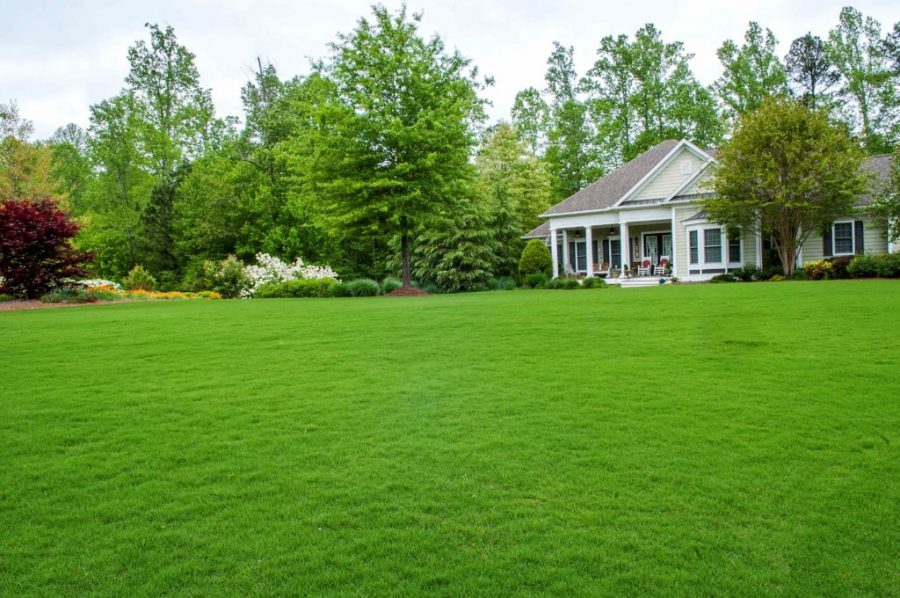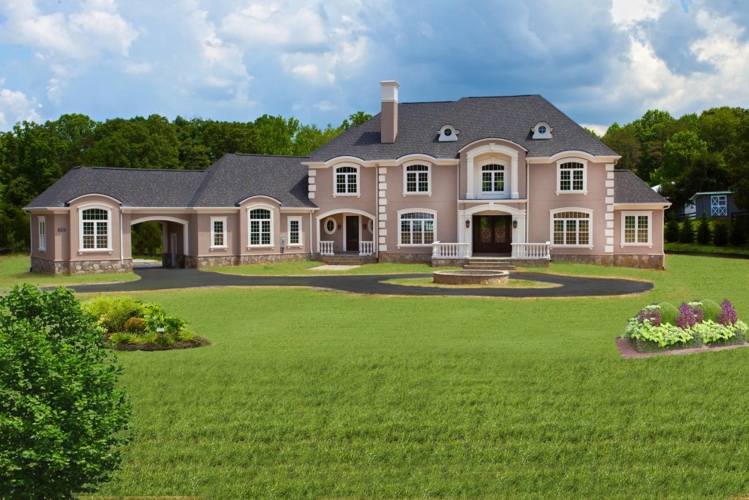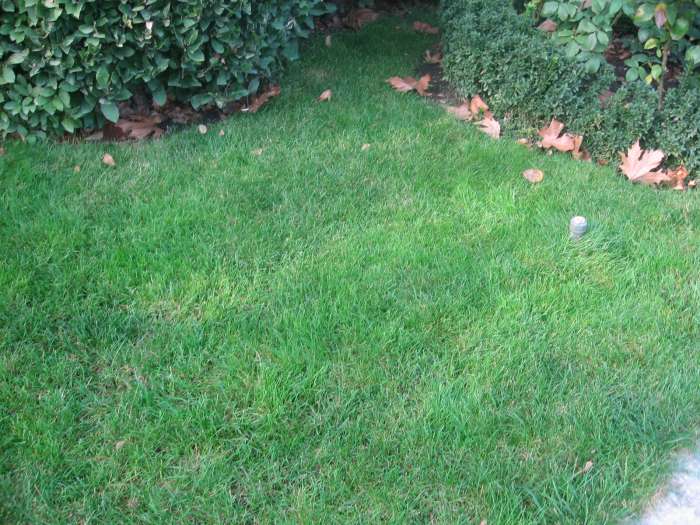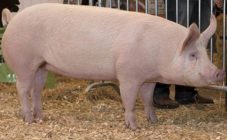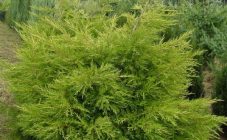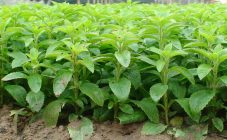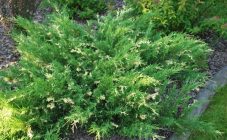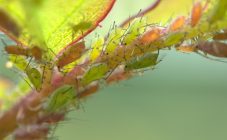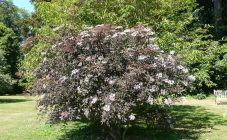Content:
In summer cottages and country houses, many owners use a lawn to diversify the landscape. Planting and caring for the canopy is time and effort intensive. To simplify the process of landscaping the site, a mixture of slow-growing grasses was created, called the Lilliput lawn. Planting and maintaining such a green surface is much easier than for traditional lawns.
Description of lawn grass Lilliput
"Lawn for the Lazy" is a modern technology for planting grass in parks, squares and private plots, developed by European breeders. The products fully comply with the state standards of Russia and are certified in many European countries.
The vegetation cover is a grass mixture intended solely for landscape decoration. Mature grass has a bright green hue and is very dense. The plants that make up the mixture are characterized by low growth rates and medium height. Created by selectors specifically for growing in any climatic conditions, including very high or low average daily temperatures.
Characterized by a low growth rate and mowing height from the second year. The mixture is frost and drought resistant. The lawn is of a very high density, which does not need to be cut and maintained too often. Specially designed for planting in almost any soil. The purpose of the selection was to create a universal lawn for the arrangement of summer cottages, squares, playgrounds, etc. Sowing of the grass mixture begins in early spring and ends in late autumn. Up to 5kg of seeds per 100sq.m are consumed. territory.
The main advantages of the "lawn for the lazy" are:
- retains color and texture in all weather conditions;
- during droughts or too low temperatures, problems with the lawn do not arise;
- the plants included in the lawn are extremely shade-loving;
- all plant leaves have a smooth and silky texture;
- the grass grows slowly, so it is only necessary to mow it the next year after planting.
According to reviews, Lilliputian vegetation has the following disadvantages:
- weeds quickly sprout on the lawn, spoiling the overall picture;
- at the summer cottage, significant bumps can form, interfering with movement. The formation of humps is characteristic of the second season;
- ground cover seeds are small, so a significant amount is needed to cover the area.
Varieties included in the lawn Dwarf
The green cover has a number of features:
- undemanding to the climate, can grow under any conditions;
- tolerates frost and shade well;
- there are no special requirements for watering;
- hard to trample.
The plant composition has high growth and development rates. For use as a vegetation cover is almost the best option.
Lilliput lawn composition:
- Fescue is a perennial plant from the cereal family. The root system is wide, gradually spreading in different directions. Under natural conditions, the growth rate of the plant is low. The cereal grows especially slowly in the first seasons, then accelerating its development. The characteristic feature is thin leaves. Shoots germinate densely, have a small thickness.The culture is resistant to frost and drought, grows well in shaded areas and is not demanding on the soil;
- Several types of fescue are used to form a lawn. Red, altered red and hairy. Red grass gives a predominantly dark green color to the lawn at any time of the year. It also increases the number of ground shoots. The altered subspecies significantly increases the density of the cover. Hairy fescue also greatly increases lawn density. Withstands frost and drought well;
- Meadow bluegrass is also a perennial cereal plant. It is considered winter. The grass grows well in the soil, with a high content of minerals, therefore it is planted as a lawn in the southern and northern regions. Resistant to temperature extremes, low water content and children's play;
- The shoots bent has short developed roots. As the plant ages, the root system begins to branch out. Perennial grass, low height. The lower leaves lie on the ground. The growth rate is quite high, so a large free area is required.
- The slender bent is a subspecies of the shoot bent. A characteristic feature is a developed root system, the stem is not thick, a large number of leaves. It is winter-resistant, does not require frequent watering and practically does not suffer from walking along it.
Planting and leaving
Planting in the soil and caring for plants does not require a lot of time and money. The plants are specially bred so as not to spend a lot of time on care.
Before starting planting, you need to completely get rid of all weeds growing on the site. You can do this with your own hands, removing them and digging up the roots, using a cultivator or using chemicals. For this, continuous herbicides are used.
Then you need to prepare the soil by completely clearing the area from cobblestones and debris. The ground needs to be leveled by grading.
Fertilize the soil. When purchasing a licensed grass mixture, Lilliput lawn, all the necessary fertilizers will be included in the package. When purchasing from other sources, you must additionally purchase a set of fertilizers.
The soil must be loosened. Planting is carried out with your own hands or with a seeder. You can plant a slow-growing lawn in any season except winter. Stir the herbal mixture before planting. It is planted crosswise. Half of the seeds are poured into the ground in one direction, the other half, crossing the first crops.
Next, you need to cover the seeds with soil. It is necessary to bury the mixture shallowly into the soil. It is best to do it with a rake. Do not plant a change deeper than 10mm. This depth will allow the seeds to grow quickly and the root system will develop quickly.
After sowing and embedding, it must be rolled. You will need a skating rink or any other available method. It is desirable that the roller be of a large mass. This point is necessary to level the soil so that the lawn sprouts evenly.
The grass mixture received the name "lawn for the lazy" not only for its simple planting, but also for its easy maintenance. Watering of the vegetation cover is carried out by the method of dispersed irrigation. Another name for the method is sprinkling. This will require special sprayers. Or you can do it yourself with a watering can. Shoots will begin to sprout from 5 to 21 days. It depends on the soil and the average daily temperature.
The first mowing begins when a height of 8 cm is reached. For the first time, no more than 2.5 cm of the tops of the leaves must be removed. To do this, use a lawn mower. With the next cuts, you can remove the stems and leaves of the plant up to a height of 4-6 cm. After removal, it may be necessary to remove some of the weeds.
Diseases and pests
Lilliputian lawn grass, like other lawns, is prone to some typical diseases. These include:
- anthracnose;
- fusarium;
- rhizoctonosis:
- dollar spot;
- rust;
- red thread disease;
- powdery mildew;
- smut;
- brown rot.
Most diseases are caused by excessive moisture or shade. To get rid of them, you need to reduce the amount of watering, in some cases, treat the shoots of the "lawn for the lazy" Lilliput with special means.
Using
Lawns are used to decorate personal plots in country houses for outdoor activities. They can be used to cover the area around the front garden and to frame shrubs. In the landscape design of parks and squares, the Lilliputian lawn mixture is used to provide places for walking and recreation for children.
The use of lawns for decorating backyards is one of the fashion trends in landscape design. However, most of such mixtures require a lot of money and time to care for, so the breeders have created a lawn grass for the lazy - Lilliputian. Dwarf plants grow slowly, do not require abundant watering and do not need to be cut frequently.
